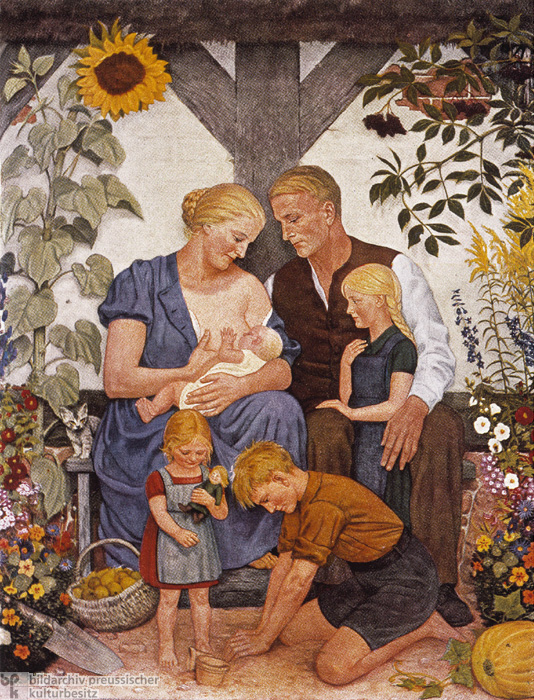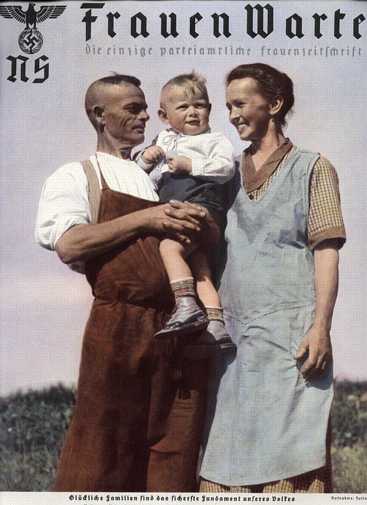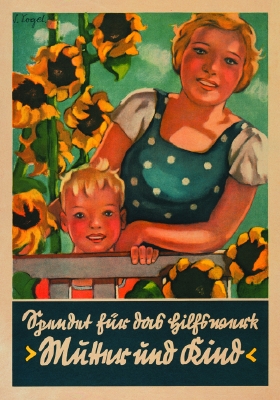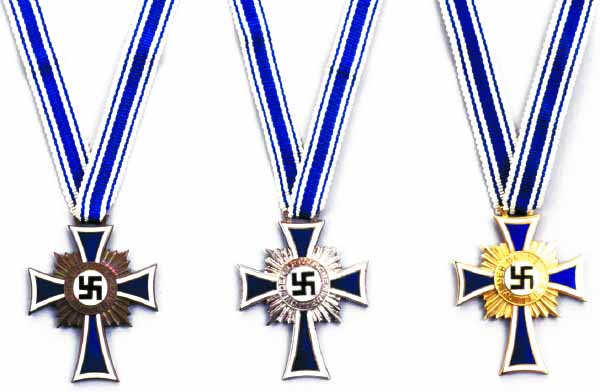Week 5: Women in the Fatherland
Graph: The Gender of Denouncers, Cologne Special Court, 1933-1944
Graph: Cases of False Denunciation, Cologne District Court, 1933-1944
Graph: The Occupation of Female Denouncers, Cologne Special Court, 1933-1944
Graph: The Gender of Persons Accused of Political Crimes, Cologne District Court, 1933-1944Image right: The Aryan Family (undated) is a print after a painting by Wolfgang Willrich (1897-1948). It depicts what could be described as the quintessential Aryan family, with their sunshine-blond hair, strong jaw lines, chiseled “Nordic” features, and rosy-red cheeks. The clothing of the boy in the foreground seems to identify him as a member of the Hitler Youth, while the traditional rustic clothing of the others links them to the rural population so idealized by the regime. Symbols of hard work, fertility, bounty, health and vitality, and connection to the land abound. The family’s home, a half-timbered, thatched-roof construction, exemplifies the völkisch vernacular architecture celebrated by the Nazis, and, as such, provides a fitting backdrop for this idyllic family scene. Image source: GHDI/Bildarchiv preussischer Kulturbesitz.
Adolf Wissel (1894-1973), Kahlenberger Bauernfamilie (1939). Wissel's nostalgic image of a German peasant family was featured in the "Great German Art Exhibit" for 1939.

.jpg)


